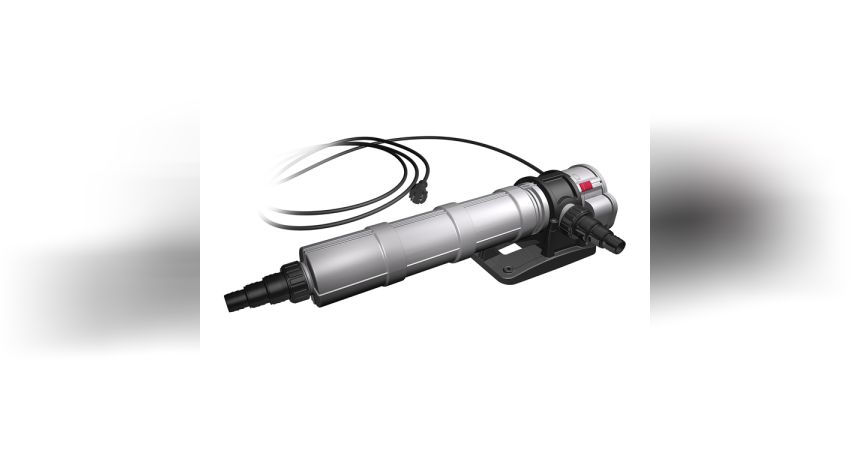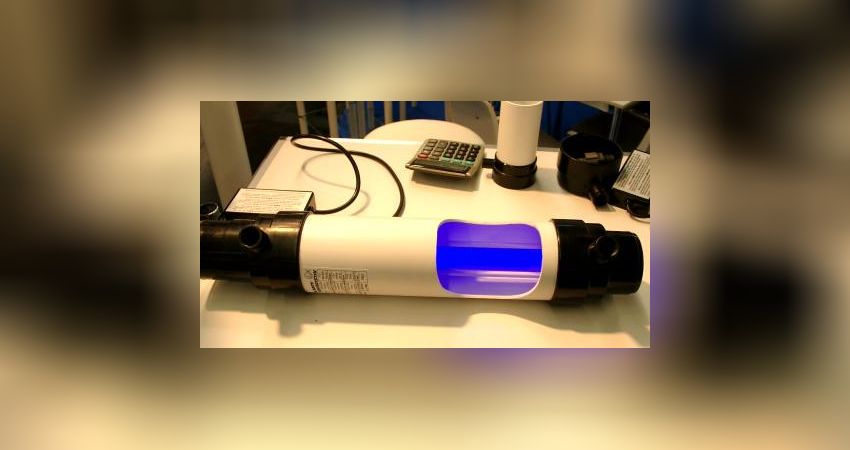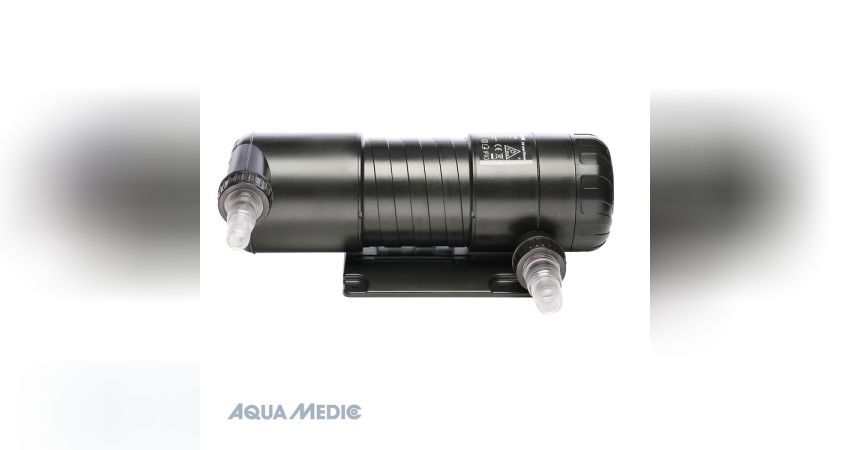UV sterilisation in marine aquariums

(c) JBL UV-C
In the meantime, there seems to be a lot of confusion about the use of UV lamps. Especially whether it really makes sense to use them in a saltwater aquarium, whether the system should run permanently and what power you need. Here you may find one or the other answer.
UV sterilisation in marine aquariums
.First of all, you should know that the performance specifications on the packaging and flow rates are calculated for use on garden ponds against floating algae blooms. A commendable exception is JBL, which gives realistic information for both applications, aquarium and garden pond. If a salesman gives you far "better" figures for flow rate and aquarium size, you can conclude that he is considerably ignorant. The JBL lights are fitted with pin-base burners, which are about in the middle of the technology currently on offer in terms of yield and efficiency.
UV lights are not only effective against pathogens in fish. Both the spread of various unwanted algae, parasites of corals and reduction of bacteria is beneficial. It is easy to have too many germs in the aquarium, which then in turn stress the immune system of the animals and thus give disease germs a boost. Various or even many compounds can be broken down, e.g. nitrate is reduced or iodine compounds are reduced. This can be counteracted, for example, with a light ozonisation in the skimmer, if necessary.
Depending on the wattage and type of burner, only approx. 10-20% of the UV component is emitted in the effective radiation range! Germicidal UV-C radiation of approx. 255 nm.
-Do not connect as a bypass to the filter return, more effective is a water withdrawal directly from the aquarium into the aquarium!
-Never increase the flow rate just because the aquarium is larger!!!! The effectiveness depends on the water flowing slowly past the burners and being irradiated for a correspondingly long time!
-Never look into the burners.
-Check the housing and seals regularly for defects. Both housing and seals can be destroyed by the UV rays. From my experience I recommend installing the devices in such a way that in the event of a leak the water runs into the filter basin or back into the aquarium.
-Do not use "NoName" products on the aquarium, the housings often break, become paper thin and leaky, serious water damage is imminent.
-Let the UV lamp burn for at least 4 weeks before buying new fish.
-Write down the lamp duration! Hardly ever does anyone know exactly how long the burner has been in operation.
Innenleben einer UV
The functioning of a UV clarifier:
Water is passed through a tube by means of an appropriate flow pump. The UV lamp is located in the tube. The water, and with it bacterial pathogens and water turbidity, is now passed by at a very small distance of usually only a few mm. In this way, the passed water is intensively irradiated. The irradiation kills the bacteria and floating algae contained in the water. The more intensive the irradiation and dwell time of the water, the greater the rate of disinfection. Overdosing or even 100% disinfection is not possible. On the one hand, this is due to the fact that water cannot store UV radiation, on the other hand, only the bacteria and floating algae in the water are caught. Resident bacteria, which are important for nitrite cation and denitrification, are not affected.
T8 tubes, fluorescent tubes
There are still devices that work with conventional T8 tubes, which are unfortunately inadequate. These devices should have a minimum output of 55 watts, anything else is too weak to effectively combat pathogens in a saltwater aquarium of 200 litres or more. To achieve effective sterilisation, the water flow should be limited to approx. 50-100 litres/h per 10 watts. All figures above this are an illusion. After 4-5 months of continuous use at the latest, the fluorescent tube must be replaced because the disinfection decreases noticeably and abruptly. Why is this so, even though the manufacturer's specifications are usually much higher? It may be that the tubes, like fluorescent tubes, also suffer a loss of performance. Can be used for longer if the water is cloudy!
Socket lamps
For example, JBL and aquamedic. From JBL, the 36 Watt is the most suitable, for slow water flow also the 18 Watt. JBL specifies 300 - 600 l aquariums for partial sterilisation. Recommended pump output 200 - 400 l/h! In a controlled experiment of mine, the sterilisation and the decline of Cryptocarion in a 100 litre tank only occurred at a flow rate of approx. 250 litres/h, new 36 watt Osram burner.
(c) JBL UV-C
(c) Aqua Medic UV C
aquamedic also offers units up to 55 watts. The luminaires are noticeably more expensive. The 55 watt bulbs are also not available everywhere and are quite sensitive to transport. It may be better to couple 2x36 watts in series. The performance data can then be doubled.
After 5-6 months of continuous use at the latest, the fluorescent tube must be replaced because the sterilisation decreases noticeably and abruptly. In case of water turbidity, however, it can be used much longer!
T5 and other burners
Fiap currently offers effective modern lamps. The only disadvantage is the thick connectors, which are designed for garden pond systems. The fixtures are seawater resistant. Flow rates somewhat better than the plug-in base lights.
After 7 months at the latest in continuous use, these fluorescent tubes would also have to be changed, because the sterilisation then does noticeably diminish.
An article by Joachim and Robert
How do you like this article?
Info
Author

Bookmark
Comments
Topics
Similar articles
- AC Runner Series - A new pump series from Aqua Medic
- Mondlicht im Aquarium...
- Product test: The Magnetic System Filter
- Cryptocarion irritans
- DIY - AquaGrow MiniTFT Touchscreen Controller - NEU !
- Guess who's coming to dinner - Or: Suckworms, the new plague?
- How a marine aquarium is created Part 45: The new Maxspect MJ-GF4k cross-flow pump
- Pathogene Bakterien im Meerwasseraquarium Teil 1
- The future of marine aquaristics - will we soon all only be measuring with the Reefbot ?
- Press release: The new X1 dosing pump from Kamoer
Comments To the top
Please register
In order to be able to write something yourself, you must register in advance.






